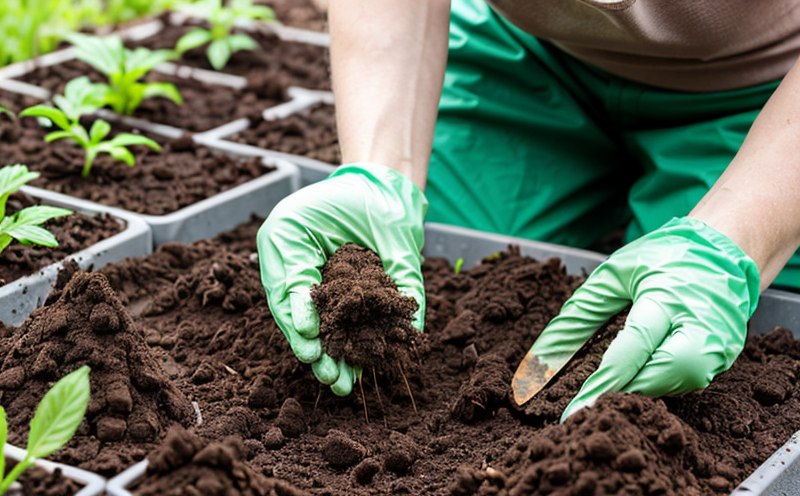DIN 50017 Climate Aging Testing of Outdoor Plastics
The DIN 50017 climate aging testing standard is specifically designed to evaluate outdoor plastics under conditions that simulate the harsh environmental factors they encounter in real-world applications. This testing method helps manufacturers ensure their products can withstand long-term exposure to ultraviolet (UV) light, rain, humidity, and temperature fluctuations without degrading prematurely.
This service plays a crucial role in the development of durable outdoor furniture, garden tools, and other plastic components used in landscaping and construction. By simulating real-world environmental conditions, DIN 50017 helps manufacturers identify potential weaknesses in their products early in the design process, allowing for iterative improvements before final product release.
The testing procedure involves exposing specimens to a combination of UV light (ultraviolet radiation), humidity, temperature cycling, and rain. This comprehensive approach ensures that the material properties are tested under conditions that mimic the outdoor environment where these plastics will be used. The test duration can vary depending on the specific requirements, but typically ranges from several months up to two years.
Preparation of specimens is critical in ensuring accurate testing results. Specimens must be cut to standard dimensions and surface finishes should meet specified criteria. This ensures that any observed changes are due to environmental factors rather than inconsistencies in sample preparation.
The equipment used for DIN 50017 testing includes specialized chambers designed to simulate the full spectrum of outdoor conditions. These chambers use UV lamps to mimic solar radiation, humidity generators to create controlled moisture levels, and temperature control systems to manage fluctuations between hot and cold temperatures.
Once testing is complete, a detailed report is generated which includes information on specimen integrity, color changes, surface texture alterations, and other relevant properties affected by the aging process. This data provides valuable insights into the performance of outdoor plastics under real-world conditions, helping manufacturers make informed decisions about material selection and product design.
Understanding the environmental impact of plastic products is essential for sustainability efforts. DIN 50017 testing aids in this aspect by providing a clear picture of how long-lasting a particular polymer can be expected to remain functional before deterioration occurs. This information supports eco-friendly practices by enabling the development of more sustainable materials and designs.
Compliance with international standards such as DIN 50017 is increasingly becoming mandatory for companies operating globally, especially those involved in outdoor products manufacturing. Adherence to these standards enhances a company's reputation and opens doors to new markets where stringent environmental regulations are enforced.
- Key Benefits: Identifies material weaknesses early; supports sustainable product development; ensures compliance with international regulations.
In conclusion, DIN 50017 climate aging testing is an indispensable tool in the quality assurance process for outdoor plastics. It provides critical data that helps manufacturers produce durable, environmentally friendly products capable of performing reliably even under extreme weather conditions.
International Acceptance and Recognition
DIN 50017 climate aging testing has gained widespread acceptance across Europe and beyond due to its rigorous standards and consistent results. Many countries have recognized the importance of this test method, integrating it into their national regulations for outdoor plastic products.
European Union directives often reference DIN 50017 as a key standard for assessing the durability of plastics used in outdoor applications such as garden furniture and construction materials. The United States also acknowledges the relevance of this testing protocol, particularly when dealing with imported goods that need to meet local environmental standards.
The recognition of DIN 50017 extends beyond regulatory requirements; it is also embraced by leading industry associations who advocate for its use in quality assurance processes. This broad acceptance has made DIN 50017 a cornerstone of best practices within the plastics testing community, ensuring that products meet not only current standards but also anticipate future challenges.
Environmental and Sustainability Contributions
The environmental impact of plastic waste is a growing concern worldwide. By using DIN 50017 climate aging testing, manufacturers can contribute significantly to reducing this problem by creating more durable products that last longer in outdoor environments. This reduces the need for frequent replacements, thereby decreasing overall consumption and associated carbon footprints.
The test also supports sustainable design principles by encouraging the use of biodegradable or recyclable materials where appropriate. Manufacturers who adopt DIN 50017 are better equipped to make informed decisions about material selection based on their expected lifespan under actual outdoor conditions, promoting a circular economy approach that minimizes waste.
Furthermore, compliance with standards like DIN 50017 demonstrates a company's commitment to responsible environmental practices. This can enhance corporate reputation and attract environmentally conscious consumers, fostering brand loyalty and market competitiveness. In an era where sustainability is increasingly valued by both regulators and customers alike, adhering to such recognized testing protocols can provide a significant advantage.





